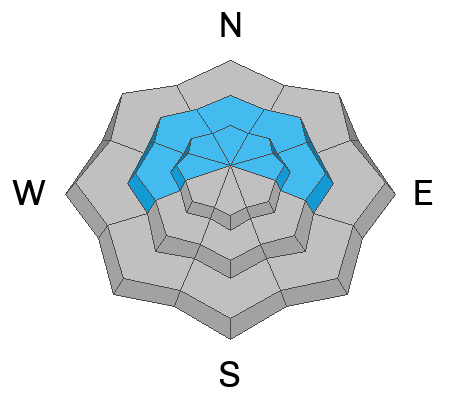Forecast for the Logan Area Mountains

Issued by Toby Weed on
Thursday morning, December 1, 2022
Thursday morning, December 1, 2022
Dangerous avalanche conditions and CONSIDERABLE danger exist on drifted upper elevation slopes. People are likely to trigger wind slab avalanches failing on a sugary persistent weak layer in steep drifted terrain. Elevated avalanche conditions also exist in sheltered terrain and on mid and lower elevation slopes where it is quite easy to trigger small soft slab avalanches failing on a buried persistent weak layer of feathery surface hoar.
- Evaluate snow and terrain carefully, make cautious decisions, and avoid steep slopes with recent deposits of wind drifted snow.
The danger will probably rise to HIGH in many areas tonight as a powerful winter storm impacts the zone. Heavy snow and drifting will cause rapidly rising danger and potential for significant natural avalanche activity.

Low
Moderate
Considerable
High
Extreme
Learn how to read the forecast here










